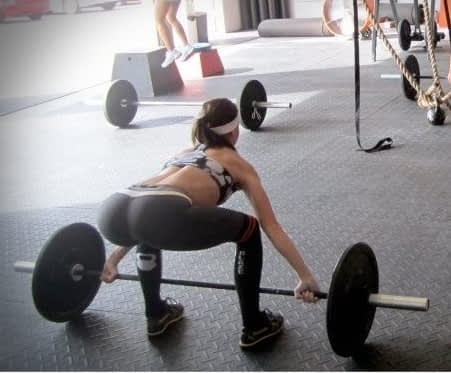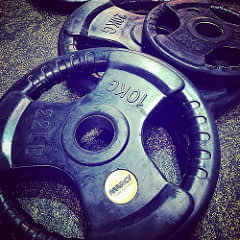One of the best ways for getting stronger

Most people who are into lifting weights have heard of the term progressive overload. For those of you who have not heard of this term before it is simply the act of continuing to make the exercise you are doing more challenging over time well maintaining perfect form and is one of the best ways for gaining strength. So if you are still reading you are probably wondering how progressive overload works, the most common progressive overload techniques are
- Increasing the weight lifted
- Increasing the number of reps per set
- Increasing the number of sets
- Shortening the rest time between sets
- Increasing the difficulty of the exercise
- Increasing the frequency of training
For best results you can cycle through each type on a schedule, for instance you could increase the weights slowly over a period of 1 month. Then for the second month you could keep the weight constant but aim to increase the amount of times you lift the weights (repetitions) for your sets etc...
definition progressive overload
Put simply progressive overload is the act of gradually (overtime) increasing the stress placed on your muscles, ensuring your body is facing a greater challenge then before.
Now walk into a weight room and you will see many average lifters trying hard to increase their size and/or strength. Walk out and come back in a month or 2 or 6 and you will notice that many if not most of the people you observed still look the same like exactly the same and have made virtually no progress towards creating a better body, simply put they are not getting stronger. Many of these people have no clue what they are doing wrong in fact many of them will realize they have made no changes to themselves and are not getting stronger but continue doing the same routine.
For a large percent of the gym population the reason is simple their bodies have been conditioned to the weight they are lifting and since they do not challenge their bodies by continually increasing the weight or reps there is NO REASON FOR THEIR BODY TO TRIGGER GROWTH. The human body will not waste resources for muscle growth without a direct need for it. By placing heavier and heavier weight requirements on your muscles your body will see this as a threat to your safety and to help protect itself and repair damaged muscle fibers will trigger higher amounts of hormones so your body can develop larger and stronger to help eliminate the threat of being squished. As your body tries to increases size you have to ensure you're giving it adequate amounts of nutrients to repair and build the muscle stronger than it was before. Getting muscles requires a small surplus of calories and an adequate amount of protein approximately 1 gram of protein per pound of body weight.
Progressive Overload for Strength - Best Exercises
The best exercises for gaining more muscles or just staying strong are compound excises. Compound exercises are multi-joint movements and are best for gaining strength (getting stronger) and more muscle. They are also best suited for progressive overload and creating a strong body and reducing your chances of creating muscle imbalances. This is because you are able to continue adding weights at a faster pace than you would be able to with isolation exercises. The basic compound exercises that should be in your exercise routine are
- Squats
- Bench Press
- Shoulder Press
- Deadlift
- Lunges
- Lat Pull-Downs
- Rows

Every extremely strong person that I have met has / does perform all basic compound exercises through out there routine and usually finish their workouts with a couple isolation exercises. Isolation exercises are for improving muscle mass to a very specific muscle group where compound exercises are best for generating the most muscle mass within the shortest period of time. Before you begin adding large amounts of weight you must have a strong understanding of the movements required for the exercise. Form is extremely important with progressive overload programs to prevent yourself from causing harm to your body make sure you learn the form at a light weight until it becomes a natural movement pattern to you.
When first starting with progressive overload it's important to start with a lighter weight and every workout where you hit a set amount of reps / sets (with proper form) you will increase the weight (5 - 10 lbs. increases are best in the beginning as the weight gets heavier drop to 2 - 5 lbs. weight increases) for that exercise the next time you do the exercise again. The number of sets and reps you choose should be based on what you are hoping to achieve. So if getting size is your number 1 goal I would use 3 sets in the 8-12 rep range. For strength I would use 5 sets in the 3-5 rep range. But if you are weak and your goal is gaining mass I would first work on gaining strength (low rep range) for a few months and then switch to the higher rep range. In the beginning you will be building mass regardless of the sets / rep range you choose (usually referred to as newbie gains). As you continue to lift heavier you know that you're becoming stronger hopefully this will help you stay motivated and keep you wanting to exercise.
For bodybuilding and strength training you will typically focus on increasing the amount of weight you are lifting. But if your goal is muscular endurance it would be beneficial to increase the amount of reputations and decrease the amount of time for rest taken first and not increased weight until later. If your goal is just to maximize your physical fitness I would cycle through the different forms of progressive overload there are increase weight, increase reps, decrease rest time etc.…
When first starting with progressive overload it's important to start with a lighter weight and every workout where you hit a set amount of reps / sets (with proper form) you will increase the weight (5 - 10 lbs. increases are best in the beginning as the weight gets heavier drop to 2 - 5 lbs. weight increases) for that exercise the next time you do the exercise again. The number of sets and reps you choose should be based on what you are hoping to achieve. So if getting size is your number 1 goal I would use 3 sets in the 8-12 rep range. For strength I would use 5 sets in the 3-5 rep range. But if you are weak and your goal is gaining mass I would first work on gaining strength (low rep range) for a few months and then switch to the higher rep range. In the beginning you will be building mass regardless of the sets / rep range you choose (usually referred to as newbie gains). As you continue to lift heavier you know that you're becoming stronger hopefully this will help you stay motivated and keep you wanting to exercise.
Looking to gain more strength or lose some weight? We offer free fitness tools to help you reach your fitness goals. Register for free while we are in beta and get free lifetime access to our fitness tools that include an easy to use Calorie Counter, High-Intensity Interval Timer, Multiple Fitness Calculators and our Exercise Logger.